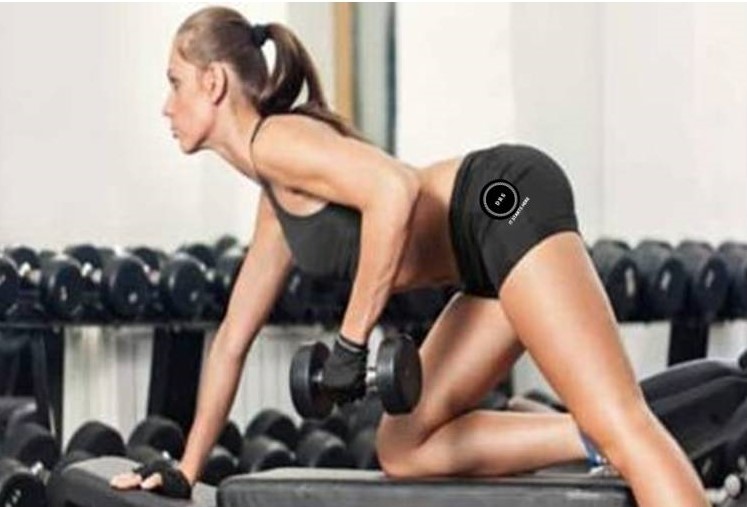This is the Proper Form
It is important to be healthy. This is the motto and mantra of Diet Rite. In order to remain healthy, you have to eat healthily. Eating healthy is where it all begins. When you eat healthily, you give your body the fuel and nutrients to operate at the best level.
When your body is operating at its best, your health will last a long time, long into your senior years. The years, when one begins to feel multiple aches and pains, and spend a lot of time at doctor’s offices. If you require #healthyeatingadvice visit https://dietritesystem.com/
While you are eating healthy, you need to exercise regularly. Exercising regularly helps strengthen your body, your bones, and your muscles. Exercising regularly is an important part of being and remaining healthy. It is important to remember when you are a beginner, or if you haven’t exercised in a long time, to start slowly and not overdo it. All things in their own time.
In this article, we will talk about the kneeling dumbbell row. Upper body strength training can be intimidating. We often try to do too much or too little and miss out on the exercises that will provide the benefits our body really needs.
The kneeling dumbbell row is a combo or combination exercise. Combination exercises are a combination of two or more different exercises within a single rep. Combo exercises are different from circuits where you complete all the reps in one exercise before moving on to the next exercise.
It’s important to be careful when doing exercises for the back and shoulders especially because these areas can be injury-prone. Strengthening them safely can help you avoid injury in the future while building the physique you want now.
Kneeling dumbbell rows definitely deserves a spot in your weight loss program. This movement engages your arms, shoulders, and upper back. When done with proper form, it’s one of the best upper body exercises you can do! Let’s learn a little more about this powerful move.
What is a kneeling dumbbell row?

A kneeling dumbbell row is a strength training move done with a dumbbell or resistance band and a bench. If you don’t have a bench you can modify the move by starting on your hands and knees. A bench is best, though, because it gives you maximum range of motion through the movement.
Doing this exercise you will engage your entire back, shoulders, arms, biceps, and even your chest. By focusing on one arm at a time, you can better isolate the lats and lift the weight higher.
By placing your free hand on your thigh, or another stable surface, you are also able to lift more weight, but keep in mind that the goal of the one-arm row is to reach the maximum range of motion of the movement rather than simply lifting heavier weights.
What are the benefits?
There are many benefits from doing combination exercises. Doing this exercise has the following benefits:
· Stronger Back and Grip
The kneeling dumbbell row is a key back-building exercise for general fitness. The dumbbell row can be done to develop back strength. Additional benefits of increased grip and biceps development when done with more reps
· Improved Posture
The dumbbell row can help to increase back strength and posture, as it develops the muscle groups that retract the shoulder blades.
Individuals who slouch, sit at a desk, and round forwards can all integrate back exercises like the dumbbell row to help strengthen the back and improve posture.
· Strengthens your core.
While the dumbbell row targets the back, grip, and arms. Those muscles groups are responsible for assisting in movements like squats, deadlifts, bench pressing. In addition to the primary muscles used in this move, kneeling dumbbell rows engage your core.
As you go through the movement you have to stabilize your body to keep from twisting. Guess what does that? Your abdominals. We love a good multi-tasking move like this one.
How to do a kneeling dumbbell row
Begin with feet hip-distance apart, holding the dumbbell in one hand.
- Take one step back into a lunge position. Keep a soft bend in your front leg with the knee in line with your ankle and back leg straight.
Lean slightly forward, and rest your free hand on your front thigh. Tighten your core by squeezing your belly button in towards your spine. This will give you a good base of support.
- Lower the dumbbell toward the floor until you have a full extension at the elbow. Maintain proper posture through your shoulders, hips, and lower back. Avoid rounding or arching the lumbar spine.
- Begin the upward motion of the dumbbell by first sliding your shoulder blade toward your spine and then lifting the weight up toward your torso by driving your elbow to the ceiling. Keep your elbow close to your body as it passes the ribs.
- Squeeze your shoulder blade in toward the center of the back (contracting the rhomboids). At the end of the movement, the dumbbell should be in line with your chest and your elbow should be pointing up toward the ceiling. Be sure to maintain good posture through your spine, shoulders, and hips.
- Repeat for the appropriate number of repetitions.
- Switch sides and repeat the same number of repetitions with the opposite arm.
- Perform two to three sets of the exercise, with a one-minute rest between sets
Common Mistakes
Avoid these errors so you get the most out of this exercise and prevent strain or injury.
- Too Much Weight
Don’t lift too much weight when you begin this exercise or you may find that you are focusing exclusively on the lats and
neglecting the smaller stabilizer muscles.
- Start with a lighter weight and more repetitions
(between 15 and 20), and squeeze the shoulder blades during the movement to get the shoulders and rhomboids firing. After you master the basic movement through the full range of motion, add weight and decrease the number of repetitions.
- Moving Arm Rather Than Shoulders
Move the shoulder blade, not the arm, to initiate the row.
- Jerking or Twisting Motion
Avoid jerking the weight or twisting the spine and shoulders. If you are doing this, it’s likely that you are using too much weight.
- Rounded Back
You must keep the back straight and not curved over throughout the exercise.

